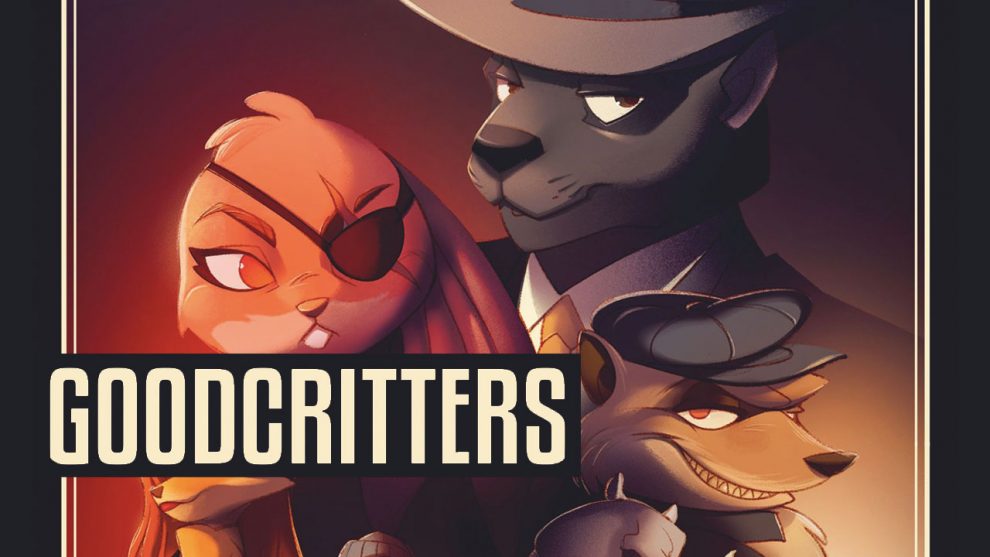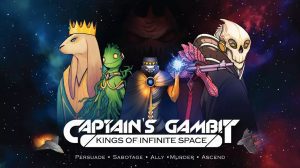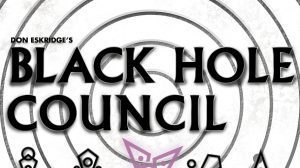I have one question for you: How greedy are you? I won’t accept “no” as an answer because I see your board game collection from here. You didn’t need all those games, but you went for it anyway. You love the abundance and the social status that goes with it, dollars be damned. It’s human nature to be a little greedy once a while so why deny it? Let me talk about a game that dwells into this question further. Let’s talk about Goodcritters.
Goodcritters is a negotiation game that can take on 4 to 8 players within a 30-minute timeframe. The premise of the game is quite simple: You and your fellow players just got back from a heist and all of you have trouble dividing it up. Your goal is to simply have the most money out of the group once The Fuzz shows up, which just happens to be a card placed just beyond half the deck of loot cards.
Each round, a player will be The Boss and will deal out the loot cards in the middle of the table to hear the groans and cheers from their mobster associates. They divide the loot however they wish and once they finalized the split, each player will play an action card and can use their threat token to intimidate other players. After the players are satisfied with their action cards, everyone will reveal their cards one at a time in clockwise order, starting with the boss. Once all the cards have been revealed, the next round begins until The Fuzz shows up.
That’s the main gist of the game but what makes the game tick is the action cards.

Let’s Get Selfish Together
Your two basic cards are your Vote Yes and Vote No. Essentially you are throwing in a vote on whether or not you agree with the proposed split. If the majority of votes say Yes, everyone gets their split and The Boss doesn’t change. A tie or majority No votes will change the leadership and the split will go back to the middle with two new cards added.
The other three action cards are where things get spicy. The “Skim” card allows you to take the top card from the loot card and add it to your stash; the catch is that only one player may Skim each round making turn order a very important factor. “Rob” makes use of your threat marker by robbing the player you put a threat on, allowing you to steal one random card their stash. Their line of defense is the “Guard” card where they steal from any player that tried to Rob them instead of losing a loot card themselves.
All these action cards give the players the ability to negotiate, threaten, bluff, double bluff, and set up traps against each other. Sure, everyone can split evenly and call it day, but there is one winner and someone will break this joyous circle to get ahead of the pack.

Messing With Your Friends
What I love about these action cards is they set up very interesting scenarios for players to mess around with. To give one brief example, I can be the second player next to The Boss, threaten them, and play a Skim card instead of a Rob card. If the Boss’ paranoia kicks in and they play a Guard card, they lose the opportunity to Skim and I get a free card out of the deal.
What’s also intriguing is voting only takes the players who threw in a Vote Yes/No card into consideration. What this means is it is very possible in a 6 player game that only one Vote No card shows up, therefore denying the split, because the other 5 players are trying to rob or guard against each other.
Furthermore, these action cards make it virtually impossible to harass players who are taking the lead. If everyone puts their threat marker on a leading player, that leading player can just play Guard card to profit off everyone and be further ahead. Since the other players know this, they will often have to spread their threat to other players on the table. The mechanism of Goodcritters prevents boring scenarios and forces players to solve this social puzzle together as a group.
The final bit is the threat markers. You can put your threat marker in front of another player and play a Rob card to steal from them. The genius part is you are not obligated to play a Rob card, thus allowing you to psychologically manipulate players through the game’s mechanism instead of constantly claiming innocence or accusations like in other social games. It’s such a simple rule to understand but introduces all sorts of player driven mayhem.

It Ain’t The Perfect Deal
Everything sounds good, so why am I not excited to play this often?
I’ll say this right now: The only reason why I am keeping this game is that I got a stupidly cheap price. I would have never spent the $25 plus good old Canadian tax on this game where there are so many other cheaper filler games that indulge me with a more interesting decision space to work with.
The major gripe with the game is the binary decision of trying to grab another card or not each round. If you want to aggressive, you want to rob someone or try to manipulate people to get a free skim. Passive means you are going to Vote yes or Guard to make sure the split goes through or protect yourself. Why is it only these two meta decisions and nothing else?
It’s the loot cards. They are simply cards valued from 2 to 5.
I know it’s a bit cliche to bring this up in a Goodcritters review, especially if you watch YouTube board game reviews, but this is something Cash N Guns got right over Goodcritters. Cash N Guns follows a very similar concept where everyone is trying to split the loot, but Cash N Guns loot cards have different mechanisms outside of numbers. You have Paintings that give a higher value the more you have at the end of the game, or the Diamond Rings that award the player with the most Diamond Rings a huge bonus.
It would have been nice if a small fraction of the loot of decks had these “random events” or elements to make loot splitting have more group involvement while enforcing a competition between the group outside of collecting more numbers. Perhaps one loot card will allow the player to pick who is Boss the next round despite the voting outcome, or another loot card that forces a player to discard 2 random cards from their stash and put them in the middle for the next round but draws 3 random cards from the deck.
What’s baffling about this is it’s already done, but for some reason, the publisher decided to use these cards with unique effects as promo cards instead of an integral part of the game. I don’t understand the reasoning behind it, especially when you consider negotiation games are a niche genre in an already niche hobby.
As much as I ranted about this, I still view Goodcritters as a decent game and I would recommend giving it a shot. I do prefer it over Cash N Guns, but to be honest, that’s not saying much. I just wish the game had more interesting decisions outside of “do I want another numbered card or not” because the foundations of the game are solid as it is, it just needed a bit more meat on the bones to turn this decent filler into a great one.
You can purchase this game at Amazon US












Add Comment